Last Updated on: 7th July 2022, 08:14 am
I’m sure you’ve heard of the Tulou buildings in Fujian, China. Typical photos show large round buildings made of soil and mud, with dark roofs and an internal circular courtyard.
Tulou in Chinese technically means “soil building”, thus can exist as rectangular buildings as well as round ones. These unique buildings are found only in the countryside of Fujian China. Such buildings are tourist attractions and sightseeing destinations. These buildings are in fact residential houses.
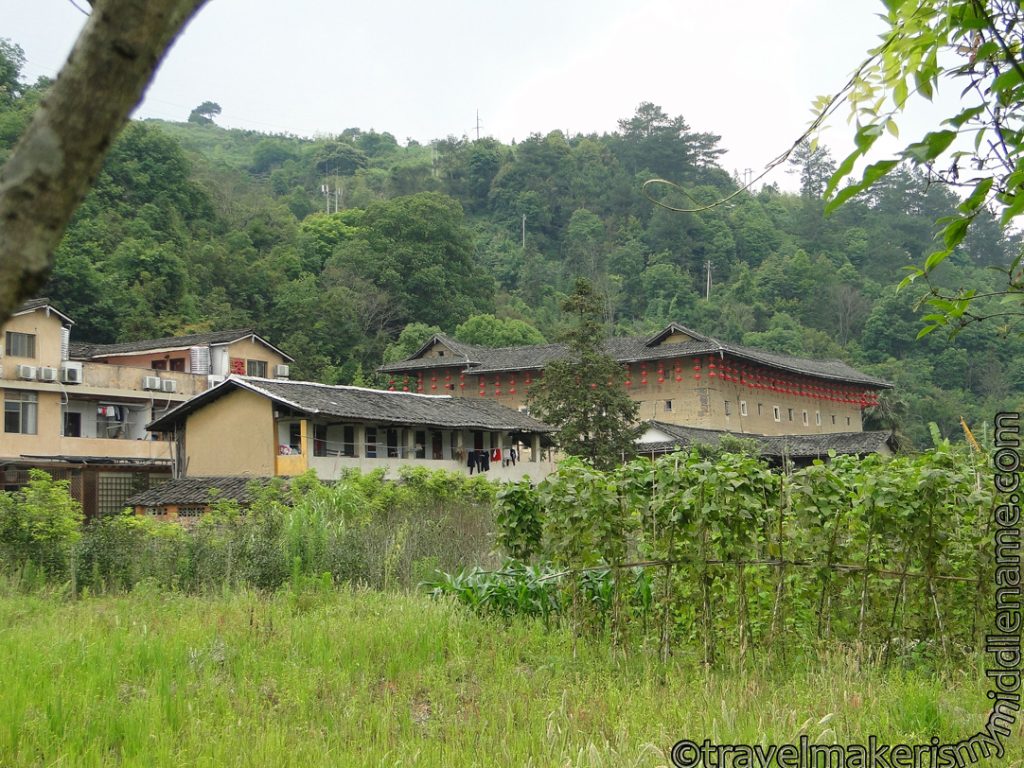
There are several Tulou communities that are open as scenic and tourist attractions and sightseeing destinations. I went to Yun Shui Yao 云水谣 (yún shuǐ yáo), which has the water wheel at the town center. Tour coaches and self driving tourists reach a car park and at the entry to the scenic area and it is about another 10-15 minutes walk to the village center where the water wheel is. There are various local shops run by the villagers in local traditional buildings selling food around the river, so if you wanted to get away from the modern shops in the cities, this is great for you.
Watch the video tour here.

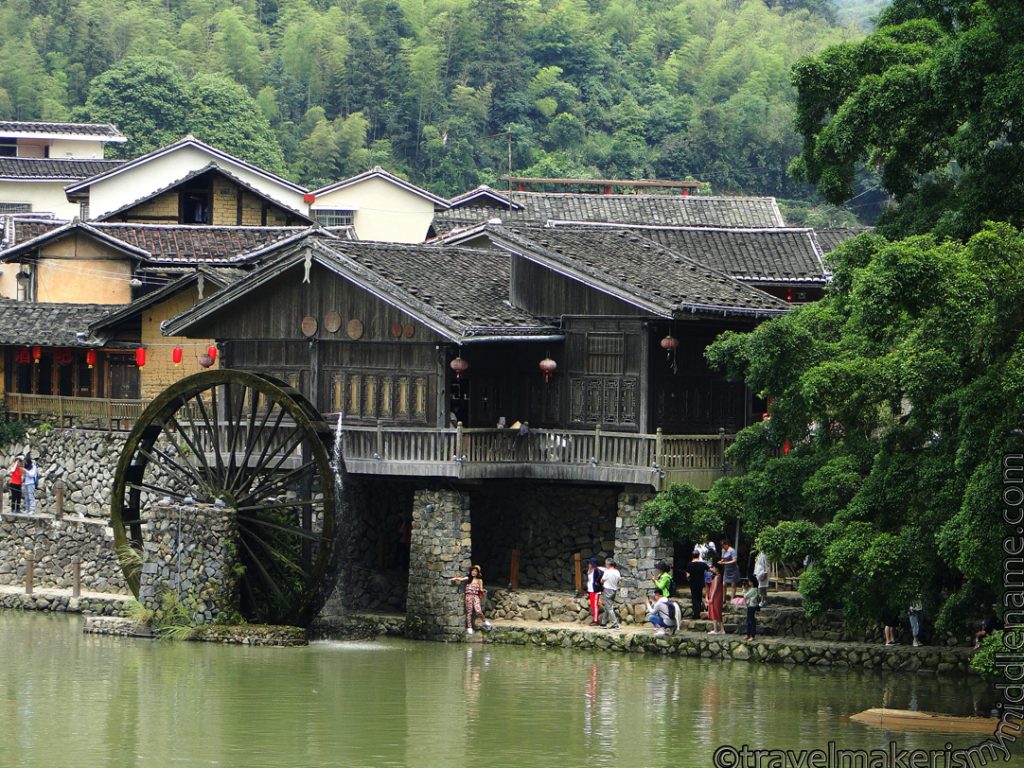
Like what your’re seeing? Please support me on Patreon!
Become a Patron!Their design
These buildings are unique to the countryside and mountains of Fujian in China. A long time ago, before transportation and roads were built and access were difficult, people that lived in the mountains had to design their shelter to protect from and monitor threats such as wild animals in the mountains as well as enemies. As such, the multi-level round Tulou was designed to allow 360° view around and enclose the community, with the first floor containing the kitchen, the second floor used for food storage and the upper floors for bedrooms. The center of the round Tulou is an open air courtyard, and thus a bird’s eye view shows a round dark circle with a hollow center.
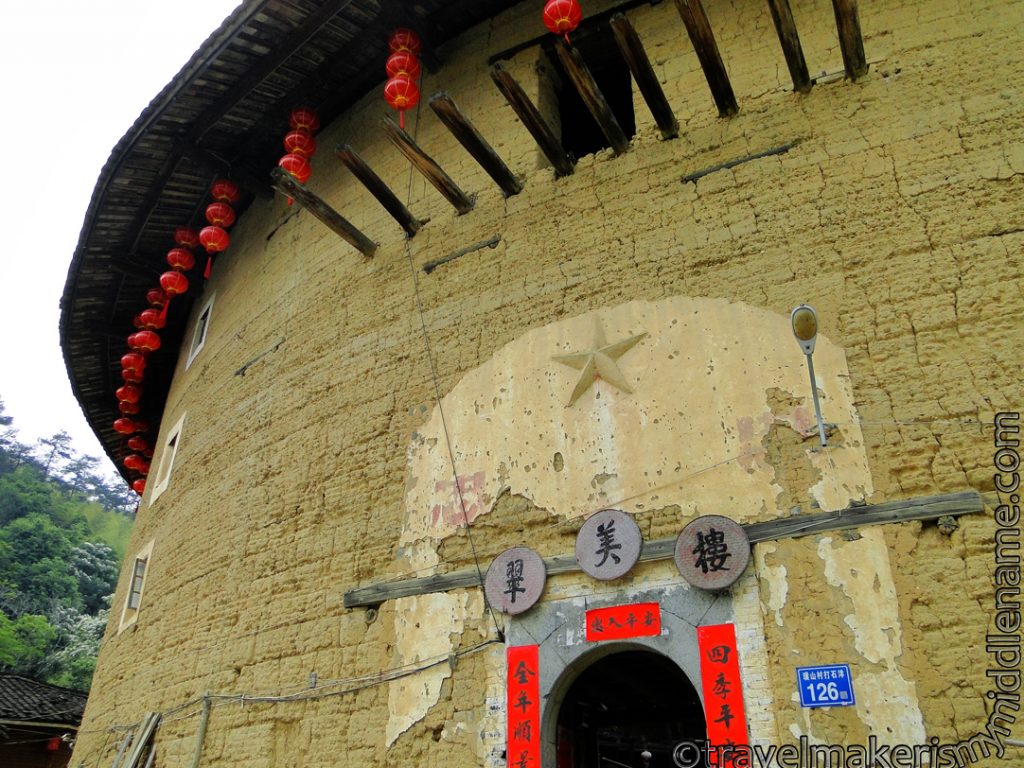
As a family expands, a new Tulou is built next to the original one, and this is how clusters form. Thus clusters of Tulou typically belong to one large family.
A brief history and how the tulou were ‘discovered’
In the 1980s, USA satellites saw these dark round buildings with smoke coming from the center and believed they were missile or nuclear silos. The smoke of course, was from the residents’ cooking.
Tours and tourists that visit the Tulou buildings are really visiting the villages and neighbourhoods of local residents, or the residential places in the countryside. The villages are now specially designated as heritage protected scenic areas and so require a ticket to enter as a tourist. These places are mostly more interesting for people who are interested in their history and design, as the actual buildings themselves are not that amazing to look at and since they are people’s homes, at least some of them are not open to the public. This is for privacy as well as to protect the structures as they are made of wood, and would quickly deteriorate if thousands of tourists stomped up and down them each day. You can however find some local residents who are willing to let you in for a small fee, such as ¥5 or so.
Local specialties
Fujian produces a lot of China’s tea, and many villagers grow their own tea (among other things) further away from the village center where the large farms are. Walking around the village after leaving the village center, you can smell the fragrance of the tea leaves laid outside to dry. Tea is unique to the location it is grown and produced in, and the Tulou areas are no exception. They produce their own red tea varieties which you cannot find elsewhere. The place I visited also had their own variety of liver care tea, which is supposedly beneficial for the liver. It was a pleasant slightly sweet tasting tea. You can also get the special variety of red bananas there and local sweets.
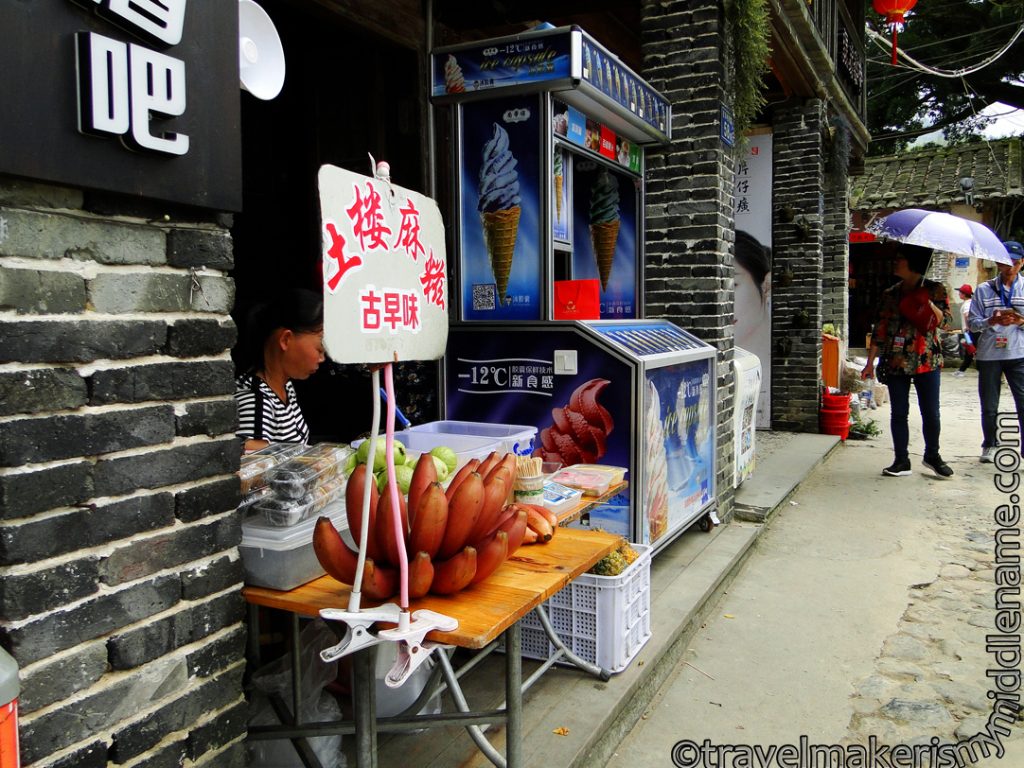
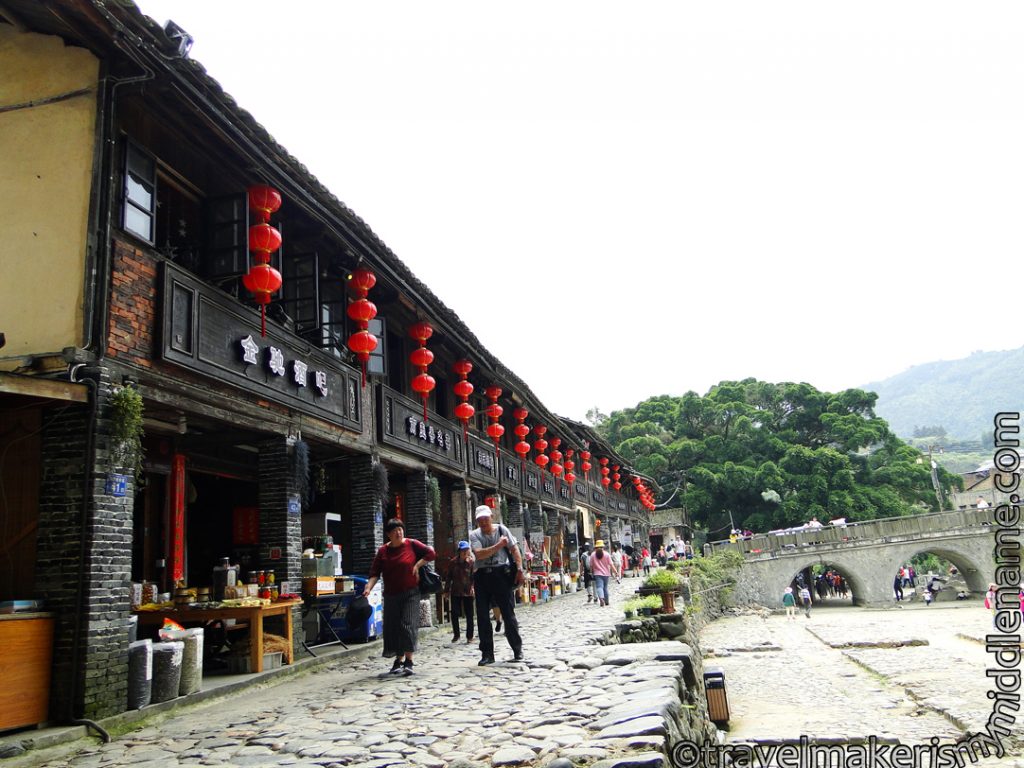
Things to note:
The tour guide said that one person said if you are already in Xiamen, if you don’t go to see the Tulou, you will regret it forever, but if you do go, you’ll only regret one day. This is because, being soil buildings, after awhile, all the tulou are the same. The tulou are designed and built for practicality in the countryside so don’t expect to see architectural marvels like you see in Beijing’s palaces. Thus when choosing which village to go, consider the following:
- What is the purpose of your trip there, ie, why do you want to go there? if it is for photography, do some research online and offline, ask tour guides about the scenes at each village. Yun Shui Yao has a flat terrain (ie, no accessible mountains near the scenic area) so you cannot take photos of the clusters of tulou from a bird’s eye view (did not see any such clusters even if you have a drone). I asked the tour guide beforehand and I knew before going I will not be seeing those view at that destination. Yun Shui Yao is good in that regards, in that the river makes a good scenic spot when you have a day of dirt buildings to look at later.
- Who are you going with? Small children? Prams? Wheelchairs? As about the terrain before you go.
- Rain – most of the ground in the scenic area are dirt roads which although flat, can become muddy in rain. The cobblestone ground can also get slippery. There is a low walkway crossing the river at the water wheel (see the video here), you do not have to cross the river there, there is a separate bridge.
Accessibility and toilets
The ground is paved with cobblestones of various sizes so I suggest wearing comfortable walking shoes, although I did see some people with high heels. Prams can manage with help.
There are public toilets in the village, but as I did not use them, I cannot comment on them. I was careful to not drink too much tea as I was unsure whether I would be able to find a toilet when I needed it. The toilet stop on the way back and the first one on the way there had more and seated toilets so once I was on the bus back I was less worried about eating and drinking.
My day trip itinerary
There are multiple tulou villages that are not that far apart from each other, be sure to check which one your tour is for. I went on a day tour with a local group departing from Xiamen city around 8am in the morning and getting back around 7:30pm. Tourists heading to various Tulous were picked up from various hotels by a normal car early in the morning (6-7 am depending on your location) then shuttled to the large coach, which then takes the passengers to the central point in the Tulou scenic area. The drive is roughly 3 hours each way, including rests both ways and 1 lunch stop at a large visitor’s center along the way there. We stopped for a 50 minute rest at a visitor’s center where all tour coaches from Xiamen stop at, for people to use the bathroom (seated toilets) and to give the driver a rest, who started as early as 5am. Tourists are shown around a local specialty products ‘museum’ upstairs, with a guide speaking from a loud speaker, explaining the local specialty products. If you are concerned, know that you aren’t forced to buy anything, but if you want to, you can buy it and leave it in the large coach and get it on your way back to Xiamen in the afternoon. You can also buy some snacks here, like fresh local fruit on a stick, which seemed to be popular.
Next, the large coach took us to the central point of the Tulou villages, where we had a tea tasting session, then a quick farmer’s lunch, at a large visitor’s center there, barely 30 minutes including the lunch, toilet break and the tea tasting session. They also sell snacks and local specialties there but there was barely enough time for lunch. The simple farmer’s lunch consisted of rice and various simple stirfries from local vegetables and chicken, such as cucumbers and egg, chicken and mushroom, ferns and various local vegetables I do not recognise. You can’t get a more authentic, no-processed Chinese meal than that. The toilet there was 2 squat style toilets for everyone (bus loads) in sheds and not very convenient. I would prioritise visiting the toilet as you can eat on the bus (provided you bring food) if you had to choose. The first toilet stop had a lot more toilets, including seated ones. The stop on the return trip down the mountain was similar.
After lunch, the passengers from the large coach was divided into smaller groups depending on your chosen Tulou destination, and then we changed to a new smaller bus/minivan and new tour guide and were driven to the final destination, which for me was Yun Shui Yao. I wanted to go to the other village where I could shoot a bird’s eye view of the round clusters, but there were no tours going there that day.
Trip duration and timing
We had roughly 3 hours in the village all up and was sufficient and not rushed for Yun Shui Yao. I cannot comment on the other villages. Once there, it was all on foot for the 3 hours. First, we had around 20 minutes at the waterwheel at leisure for photos, or you could browse the shops. Perhaps for someone who was more interested in exploring the small area more, more time would be better, but for me, it was enough to get some photos taken before we had to congregate at our meeting point under the large tree to walk to the next stop.
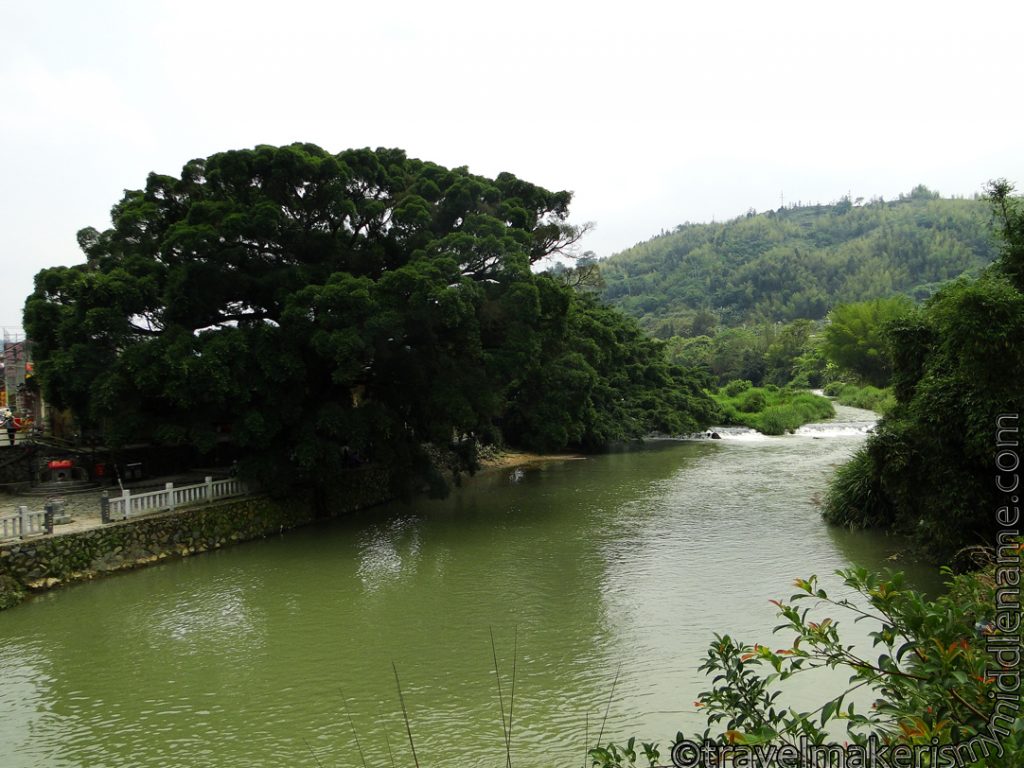
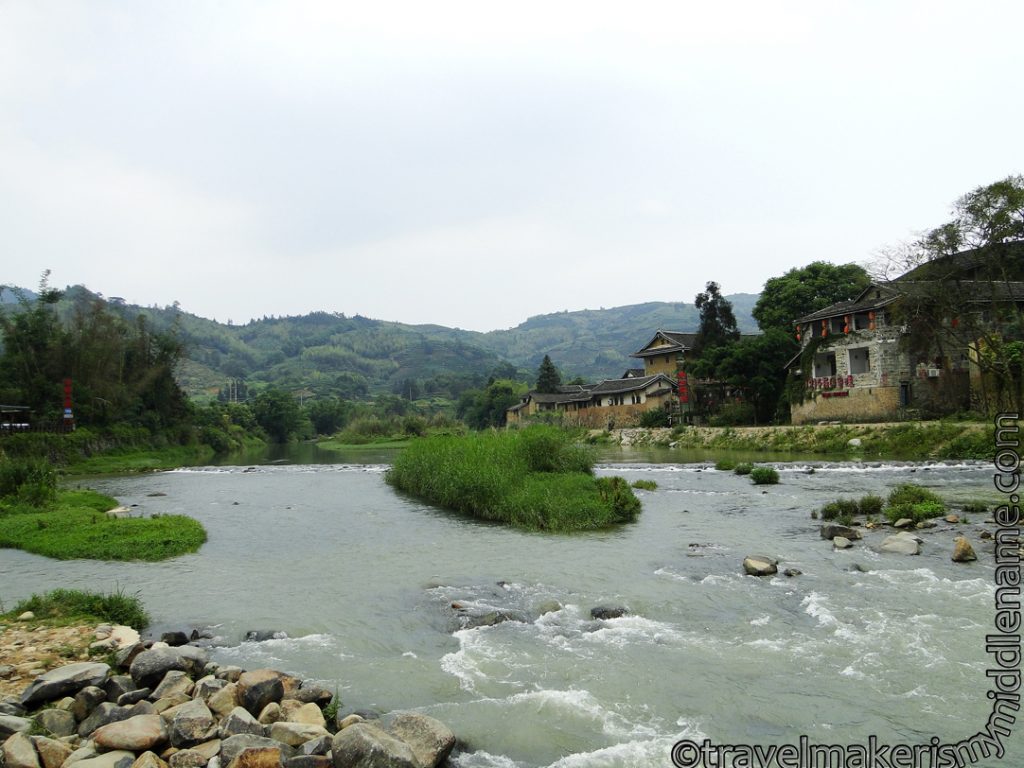
We crossed a bridge over the river, then visited the Tulous for photos and sightseeing. The resident there charged ¥5 to enter the Tulou courtyard and a bit more to climb up the stairs to the top floors. This is at the resident’s discretion (it’s their house after all) and not included in the ticket price. After that we went to the villager’s house for tea tastings and then visited various buildings in the village, including a more ‘touristy’ center with shops where you could buy unique souvenirs like paintings on slabs of timber, jewellery or try local pastries and sweets.
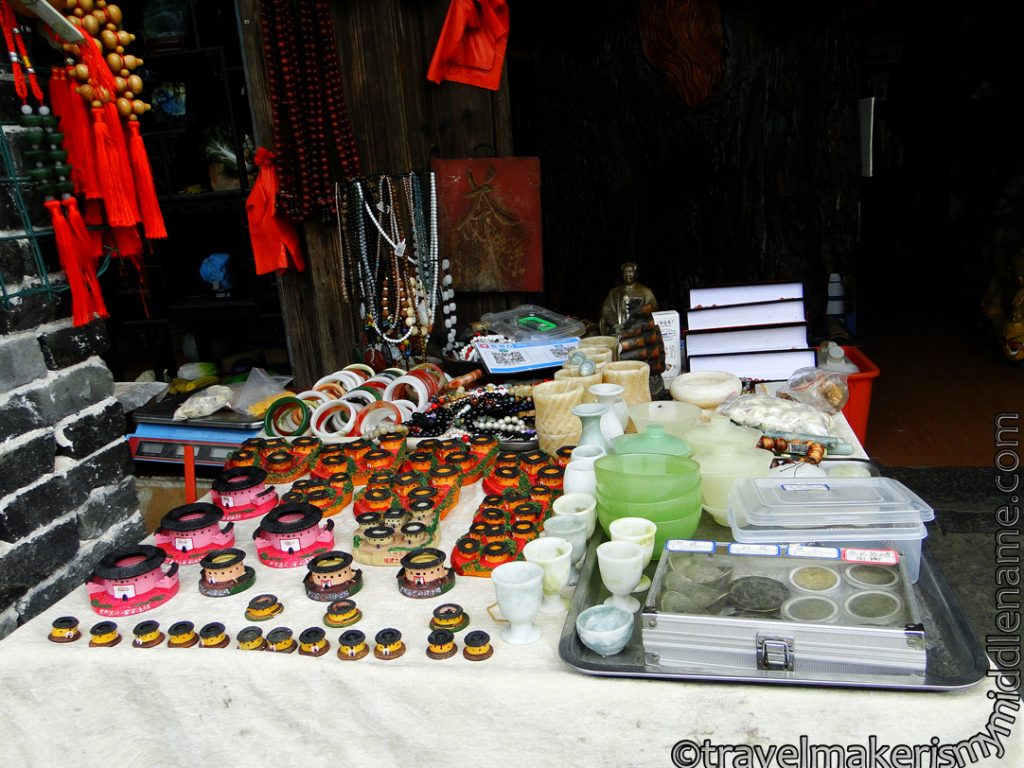
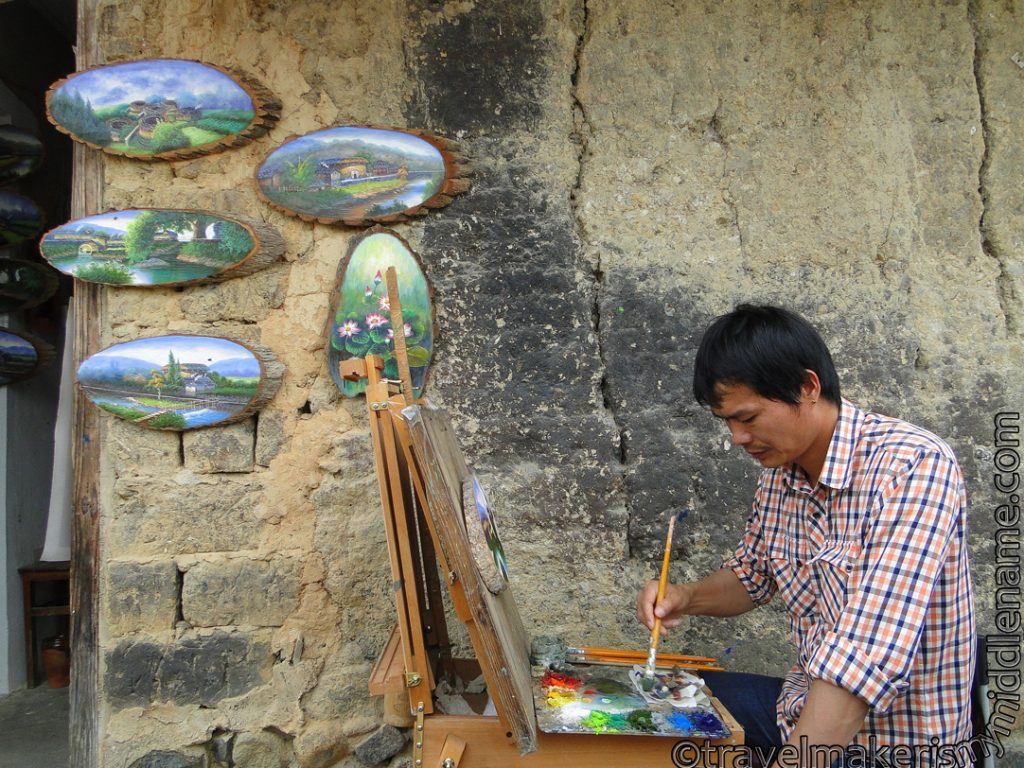
The villagers also create their own cigarettes from locally farmed plants (not sure what type, not a smoker) and at the tea tastings on my tour, the tea brewers will offer you local cigarettes. The guides warned us we can take one but you cannot smoke them there. Smoking is absolutely not allowed in the villages (there are security cameras) and you will be fined, because the wooden structures and farms are all very flammable.
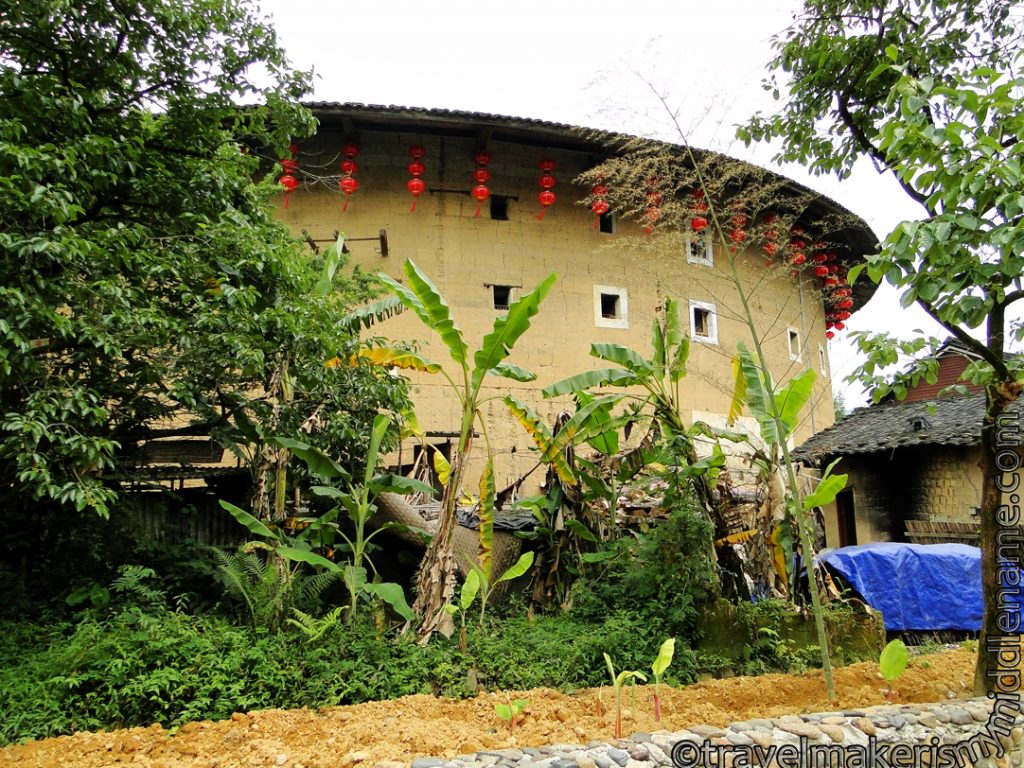
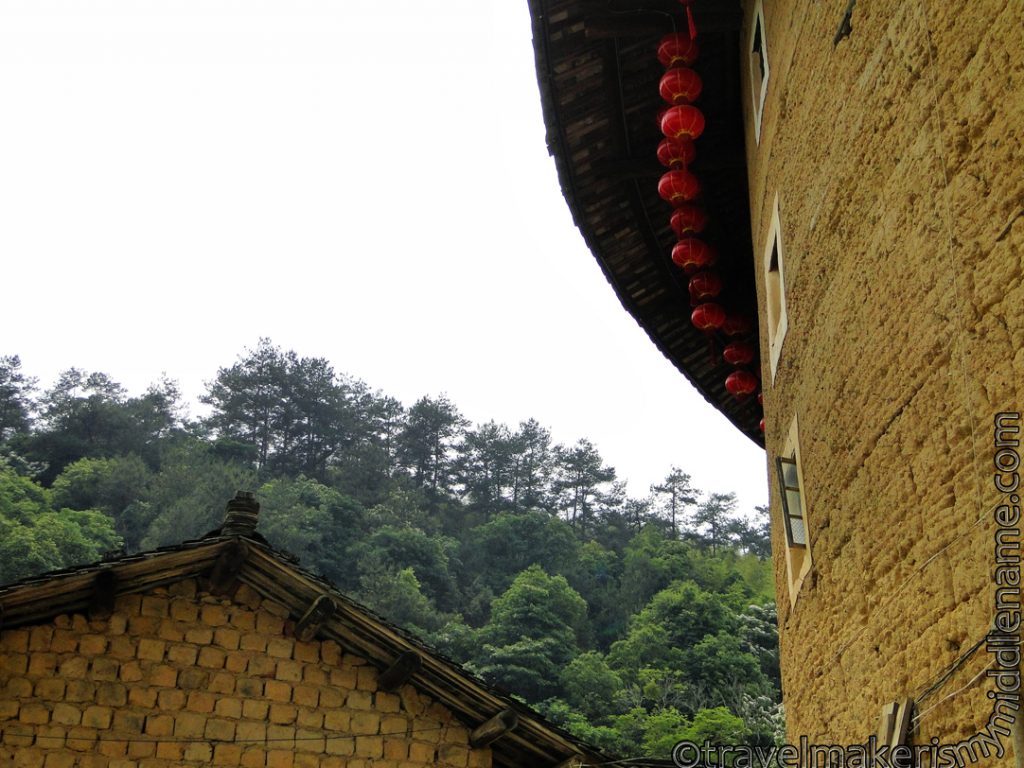
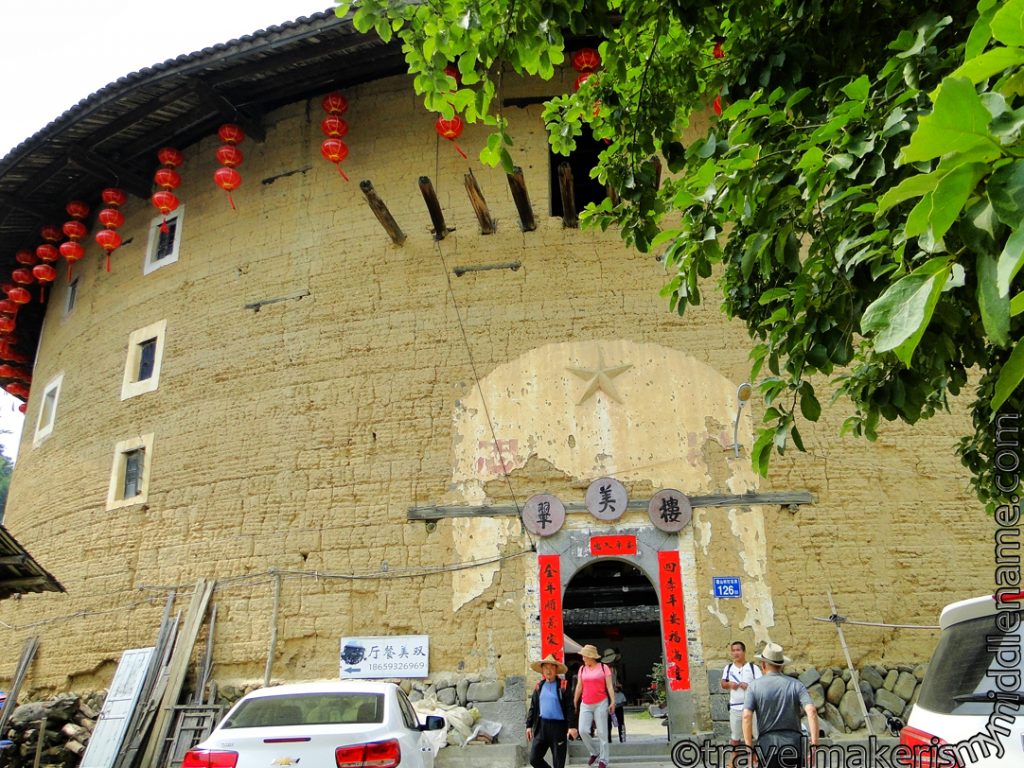
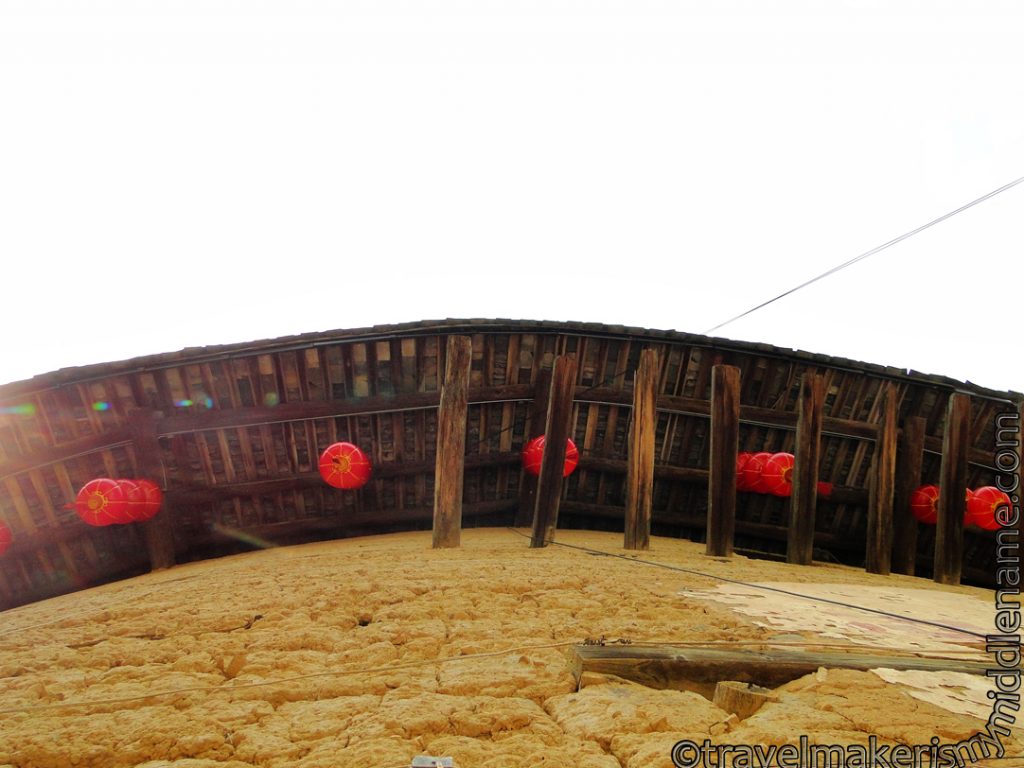
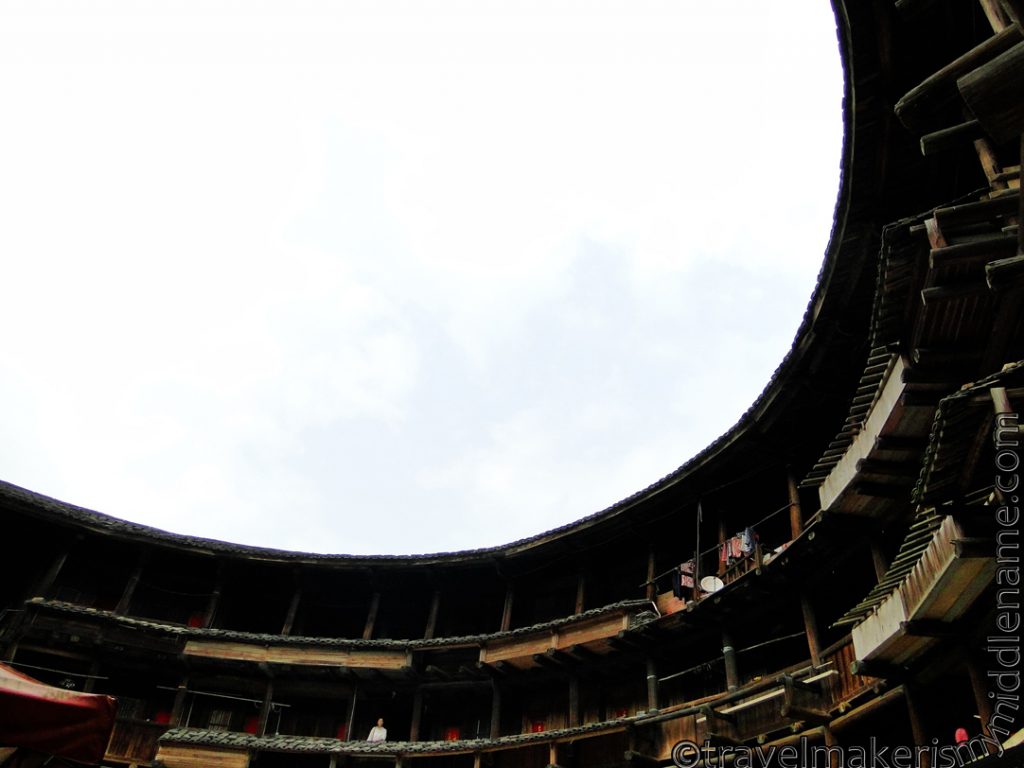
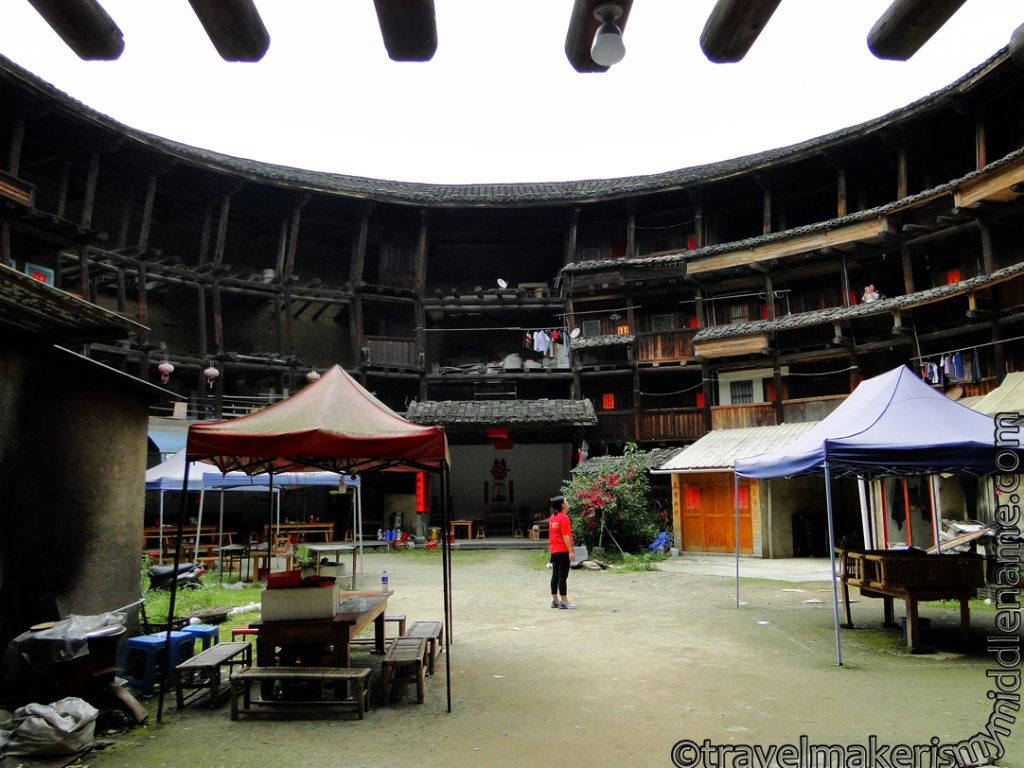
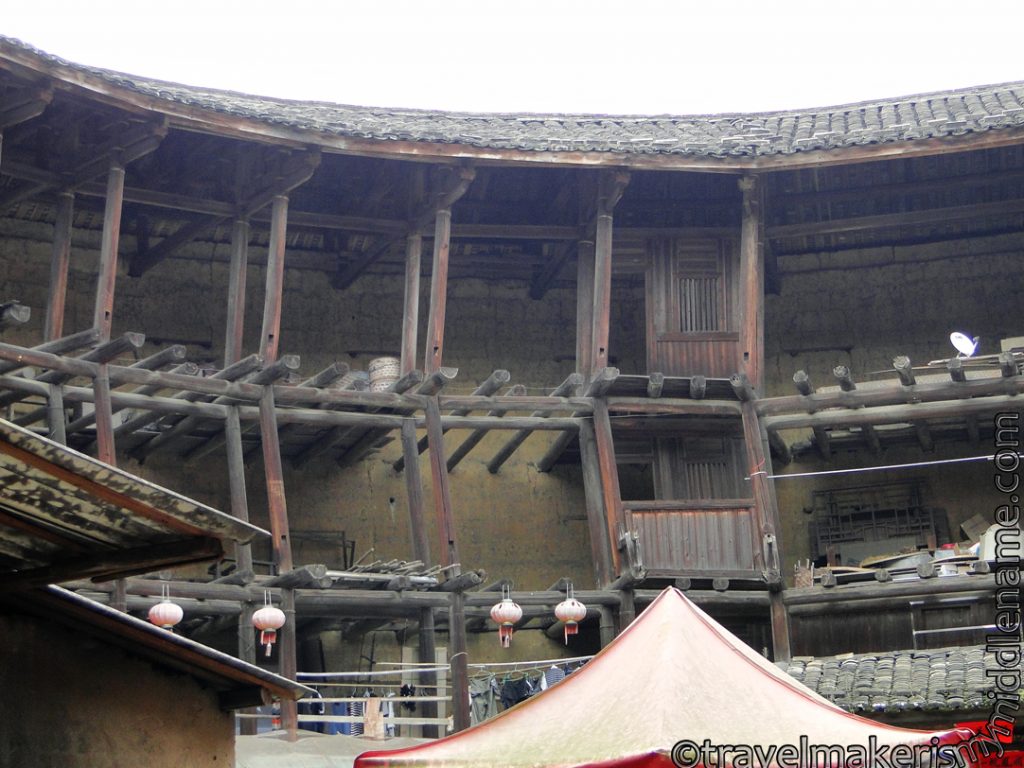
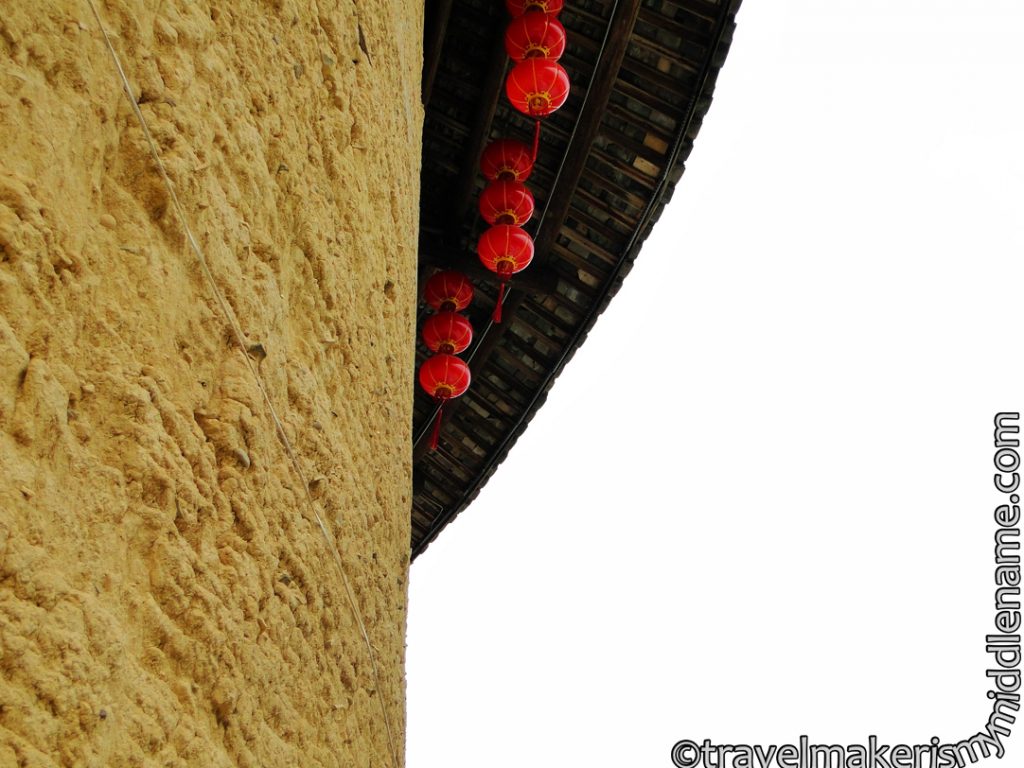
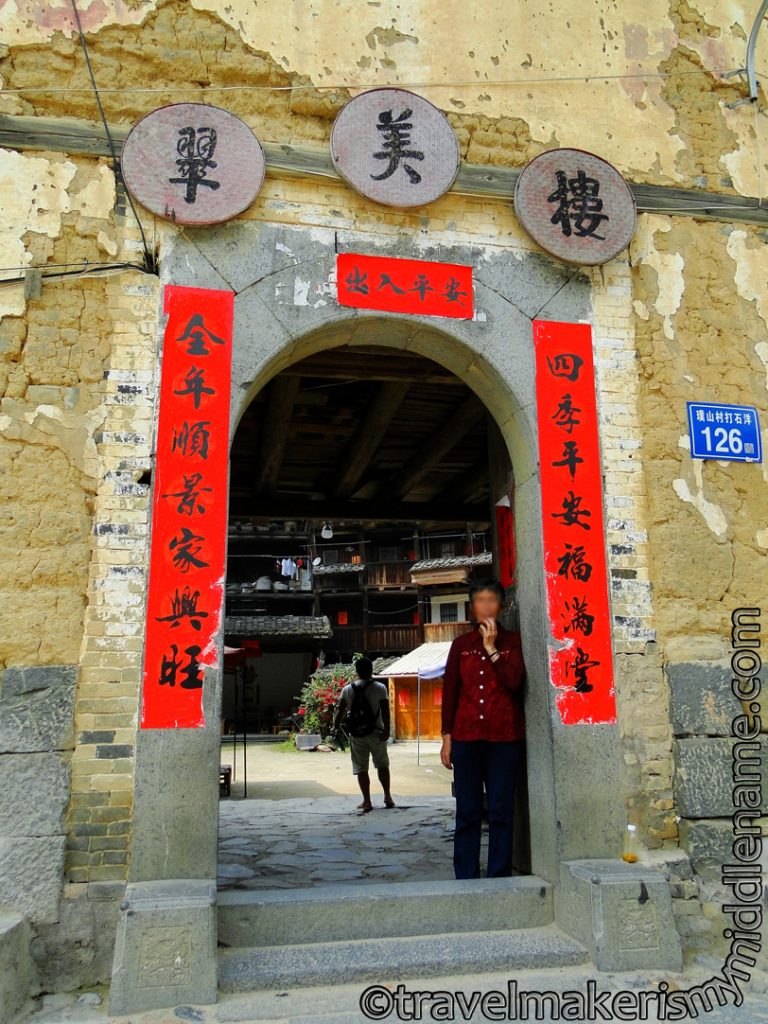
Walking through the village
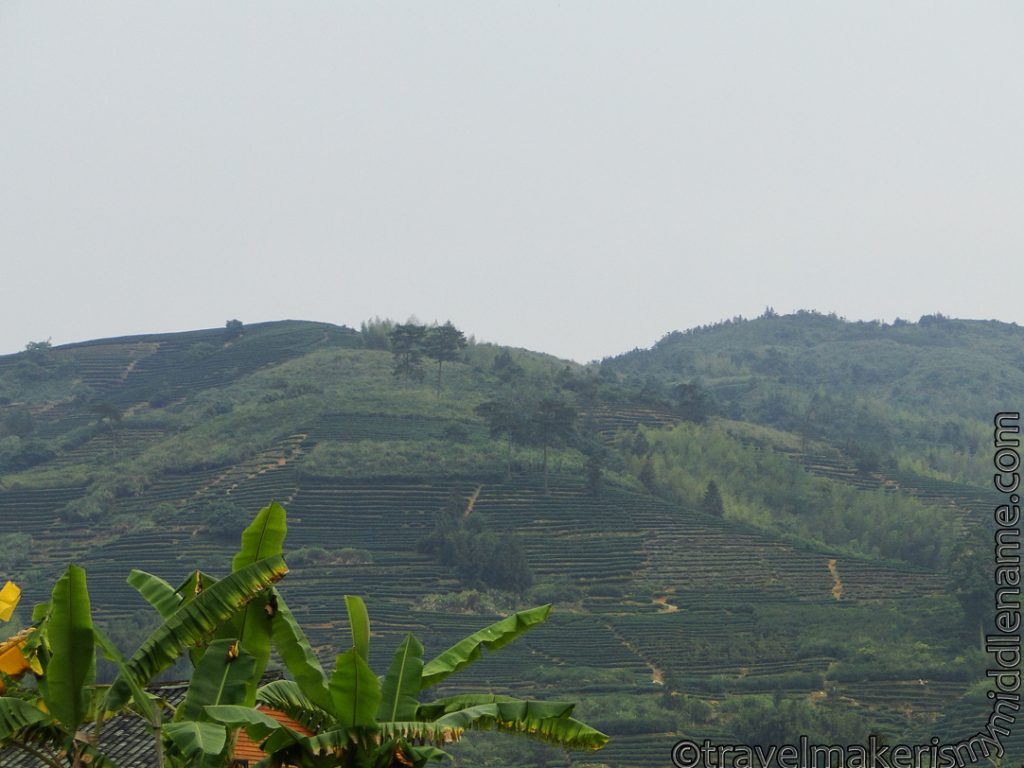

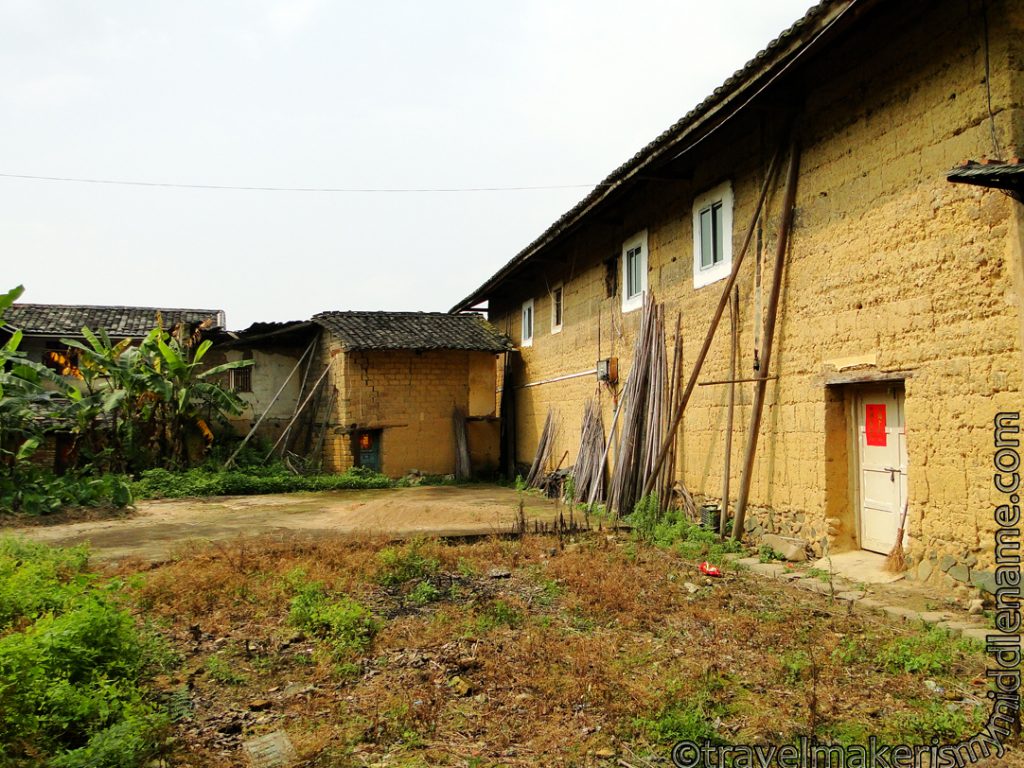
More rectangular Tulou
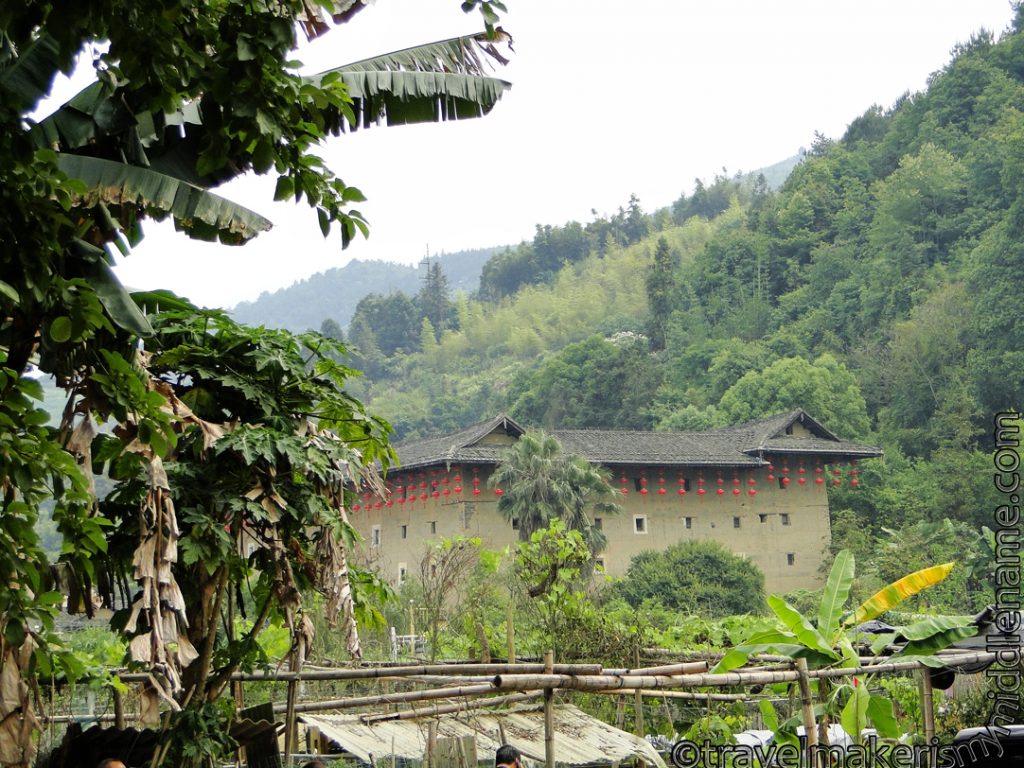
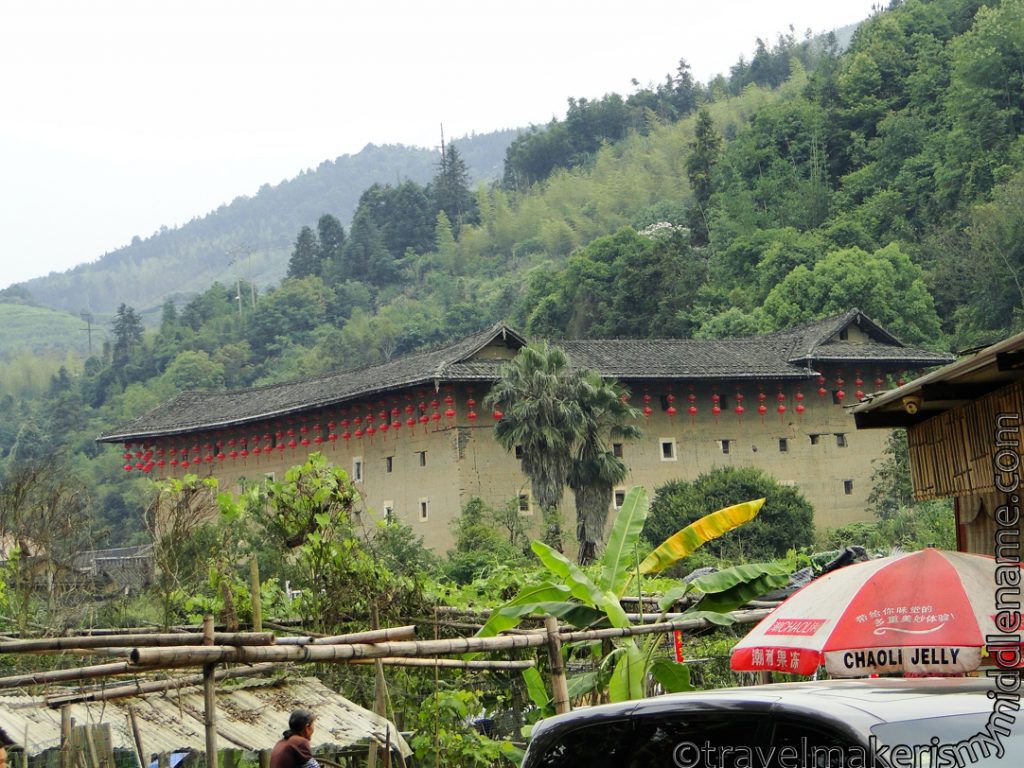
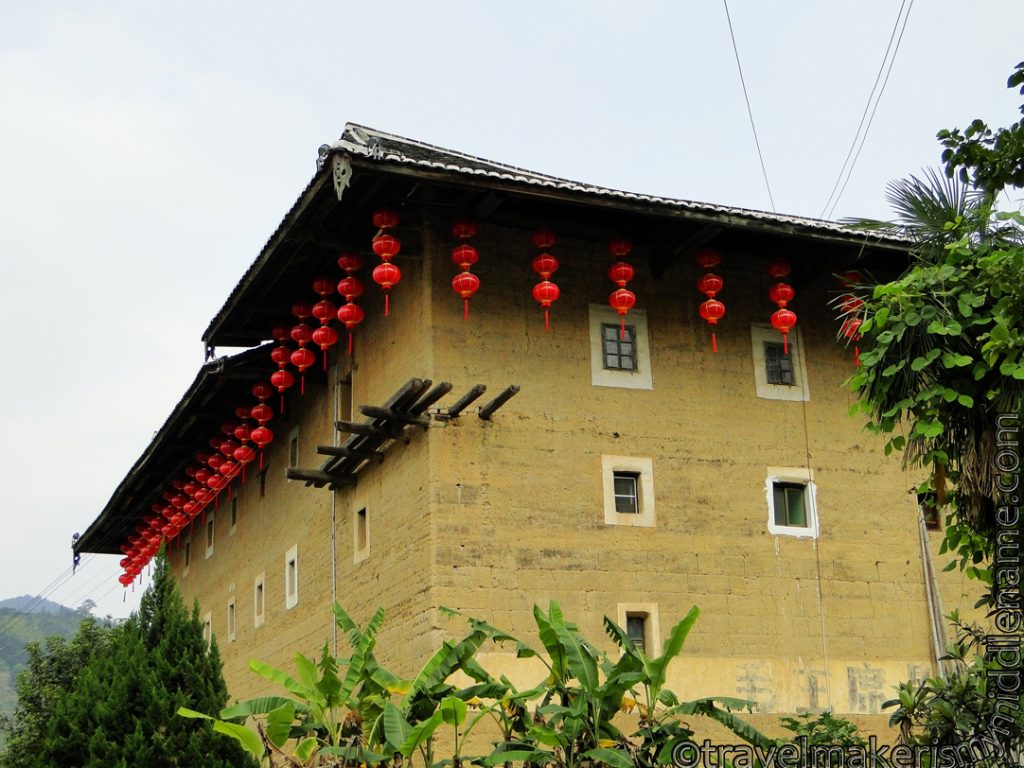
We stopped by a tea roasting room, where hand picked tea leaves are hand roasted in a fire oven:
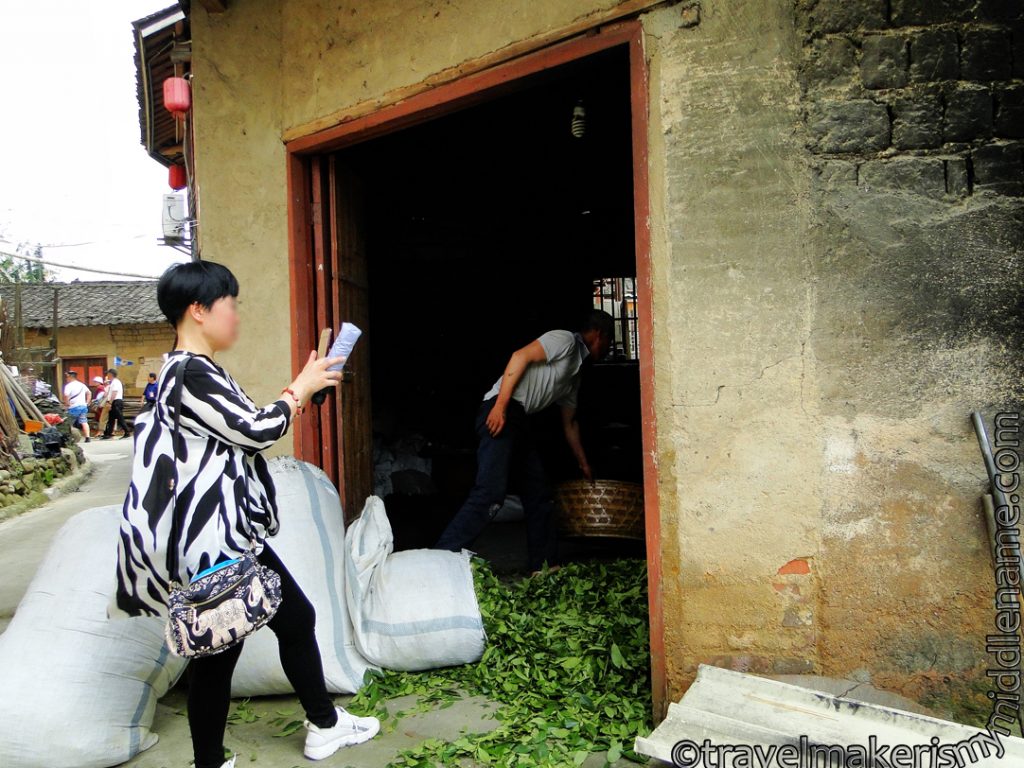
Being spring, there were tea leaves outside on the footpath drying in the sun and the air smelled very fragrant as you walked by:
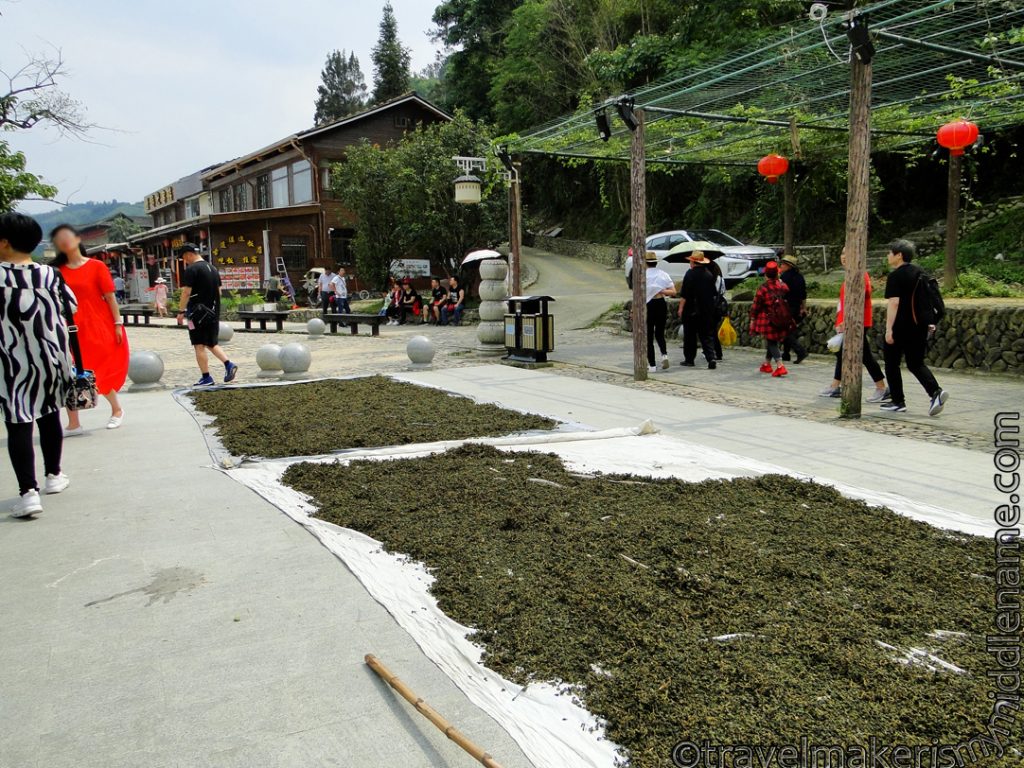
One of the tour guide’s family is actually from that village and as part of the tour, we went to some local Tulou buildings for photos and sightseeing and to his home to do tea tasting. The host who brewed our tea happened to be his aunt, but rest assured, it was not a commercialised trip, as other groups in this tour/company would have done the same as part of the Tulou tour. Visitors sat in groups at low bamboo and timber tables in the house and the host would prepare various teas for you to taste. A local way of thanking the host for the tea is to tap the table twice with your middle and ring finger as the host pours the tea into your cup.
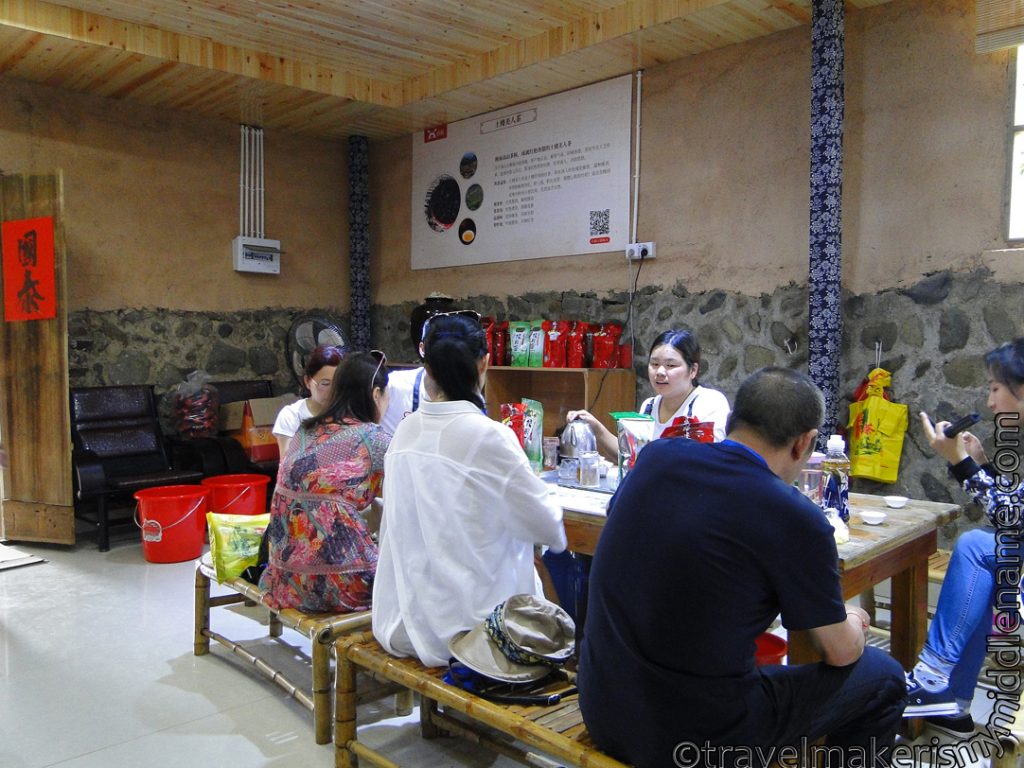
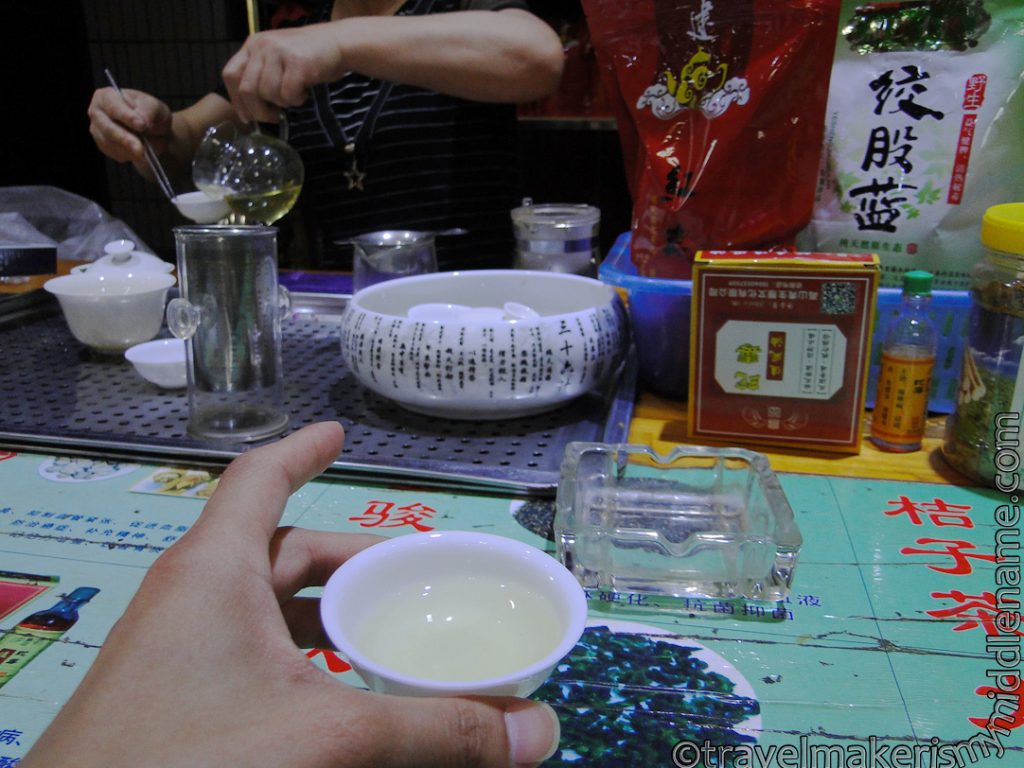
A freely open Tulou courtyard, there is one shop here.
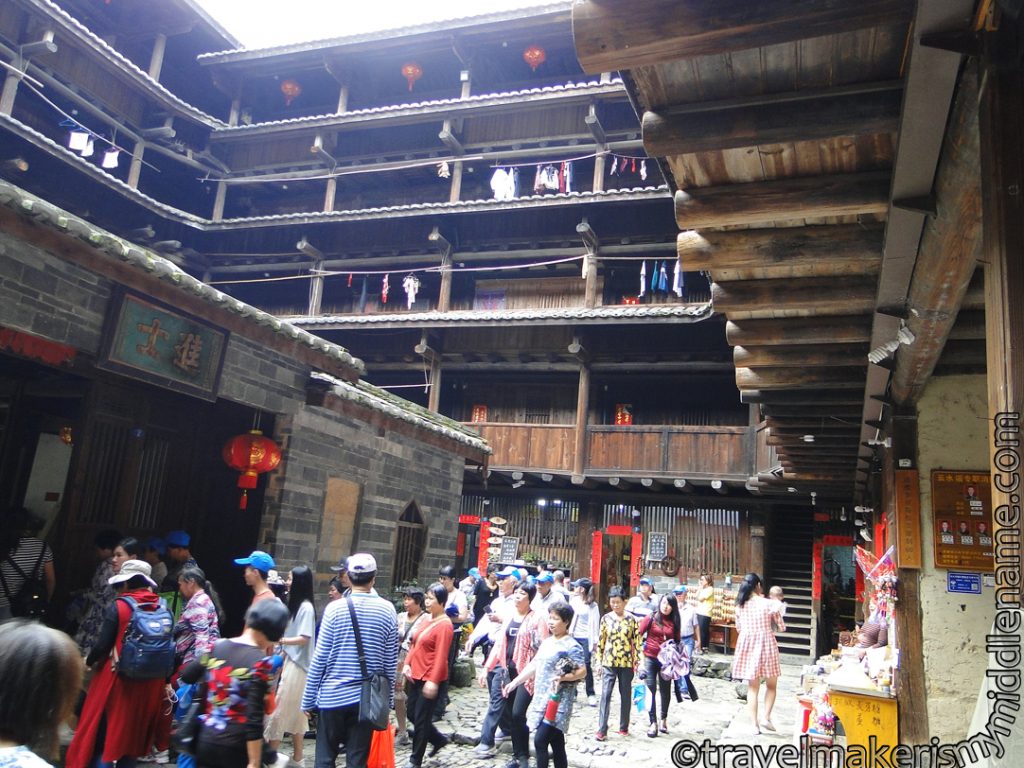
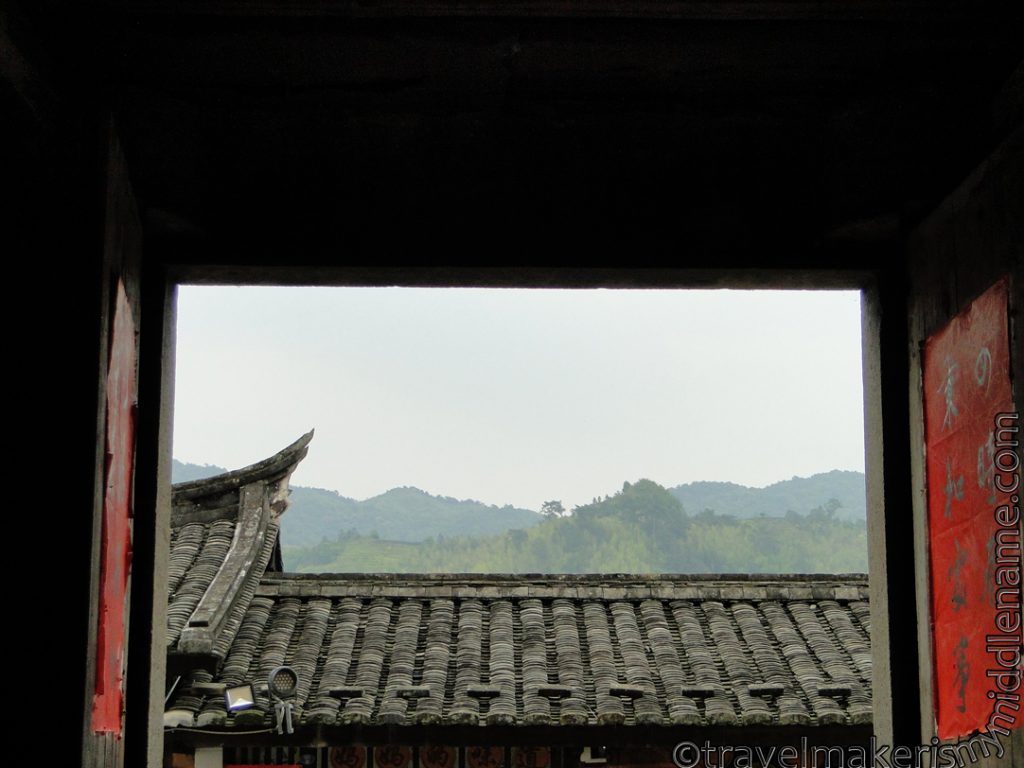
Return trip
At the end of the tour, we walked back to the carpark we were dropped off by the minivan earlier, and the large coach (with your belongings in it) comes to pick us up and take us back to Xiamen. We had one stop on the way back at a large local specialty produce shop where you can buy packaged goods as well as fresh groceries, and also some hot snacks like noodles or sausages to eat on the bus back to Xiamen city. This was about an hour into the return trip and we stopped for 20 minutes.
Note: This was my itinerary. I cannot guarantee your tour’s would be the same, however, I was told the first stop on the way there, with the local specialty museum, was the rest stop for all or most coaches and was specifically made to receive the visitors. The lunch stop also, I feel, is the same, as there are other shops in the area and a large map showing you the distance between the Tulou villages and the current location, plus phone number of (I assume) the building there, which is like a visitor’s center.
Tips:
Bring your own food and snacks to eat on the bus and along the way. We had to bring our own breakfast and eat it on the bus. You can bring some food from bakeries and bottled water or soy milk etc from grocery stores. I am glad I did because the lunch stop, at 29 minutes, was not enough time for me to eat lunch and use the toilet especially given the amount of tourists and only 2 toilets, so I ate my own food on the minivan afterwards. Provided you will take the same coach back, you can leave heavy items on the coach.
Wear comfortable walking shoes as the ground around the river is made of cobblestones and is very uneven at some places.
Getting here
I went on day tour departing from Xiamen with a local Chinese tour group. This can easily be done as a day tour from Xiamen, I used a local Chinese group. The bus left at around 8 am and returned around 7pm, and spent around 3-4 hours at the village. If you want to stay there longer, you can hire a taxi for around ¥300 who will stay there waiting for you the whole day, or stay overnight in the village.
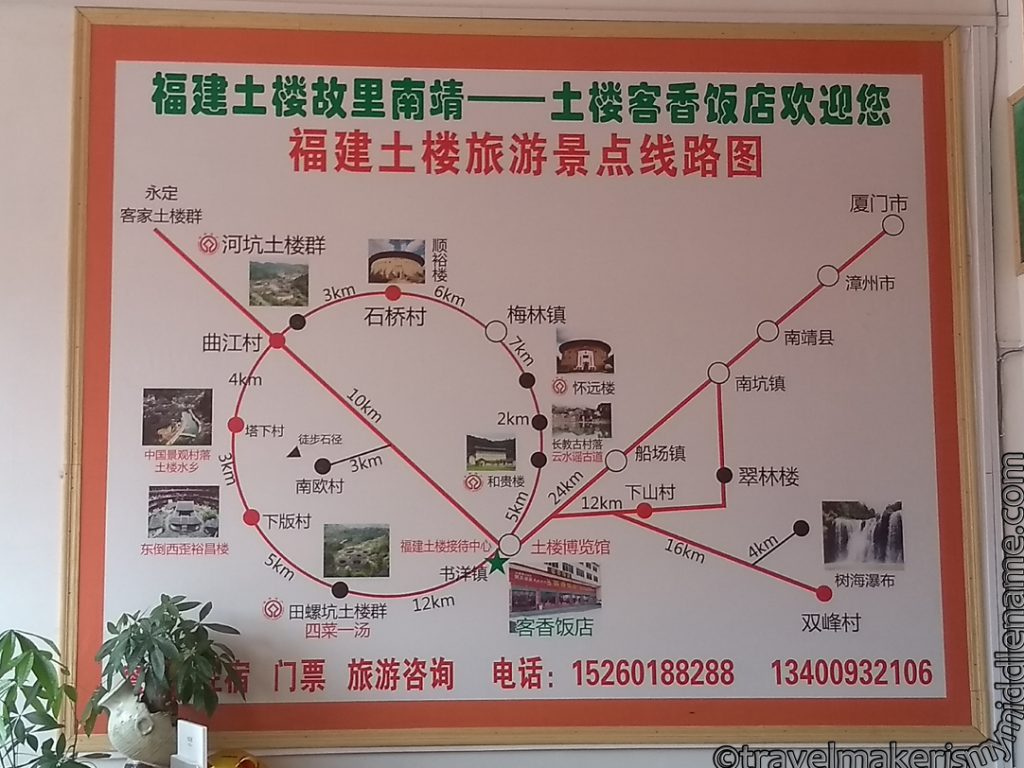
Here are some photos on the way out of the scenic zone:
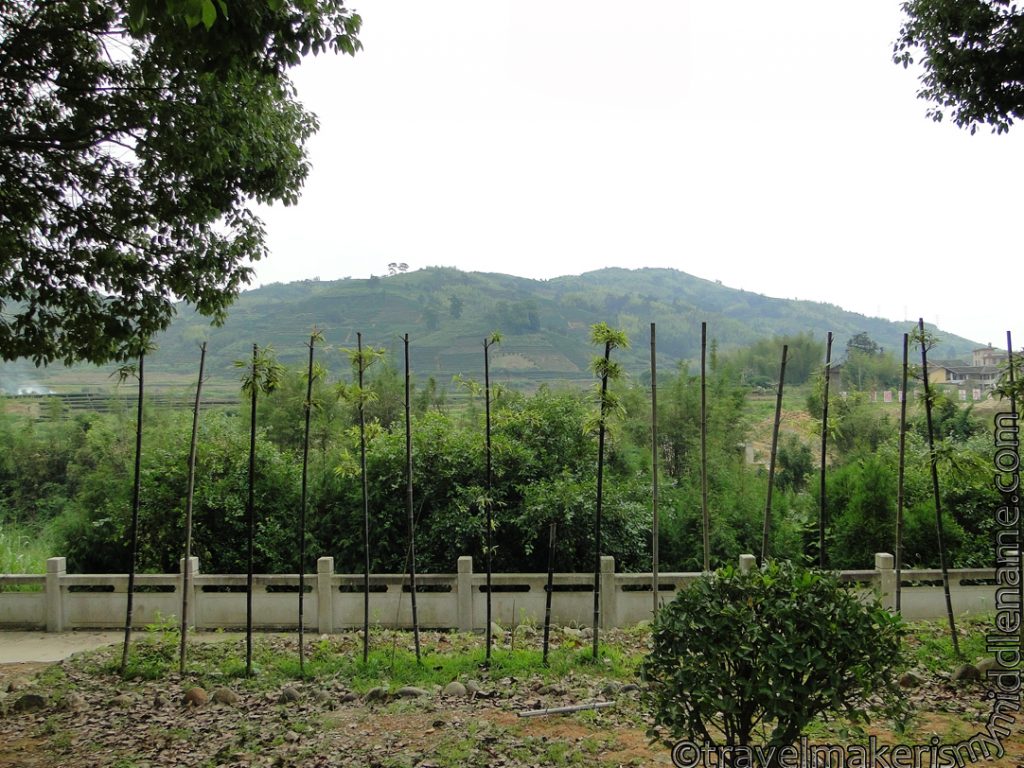
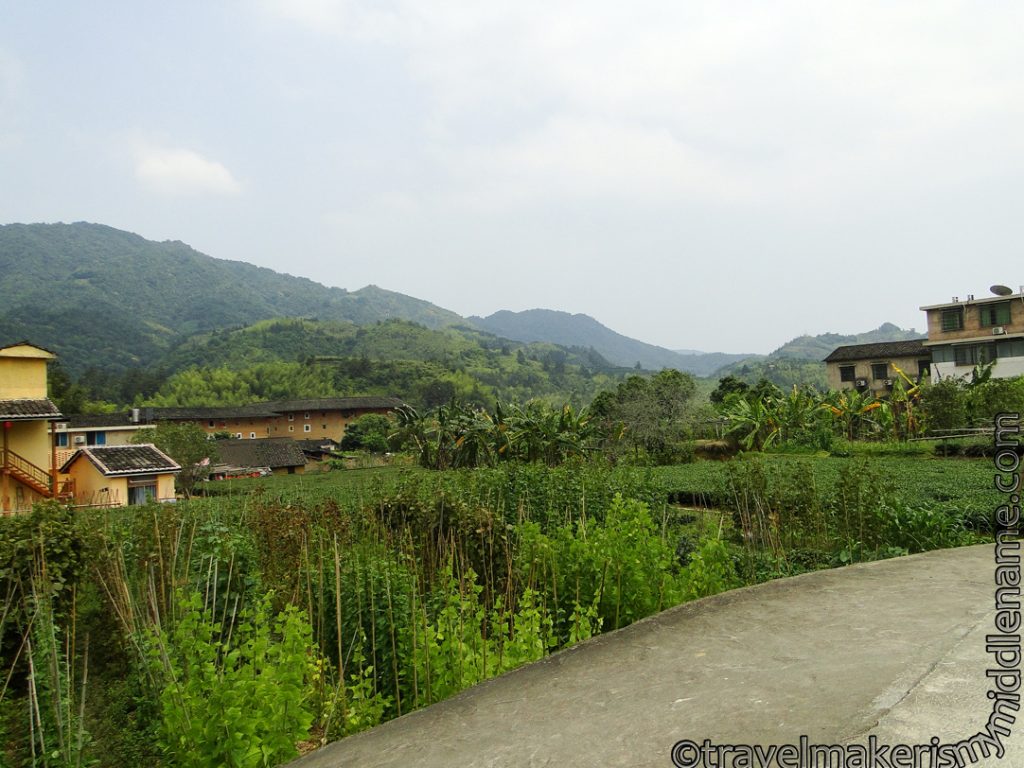
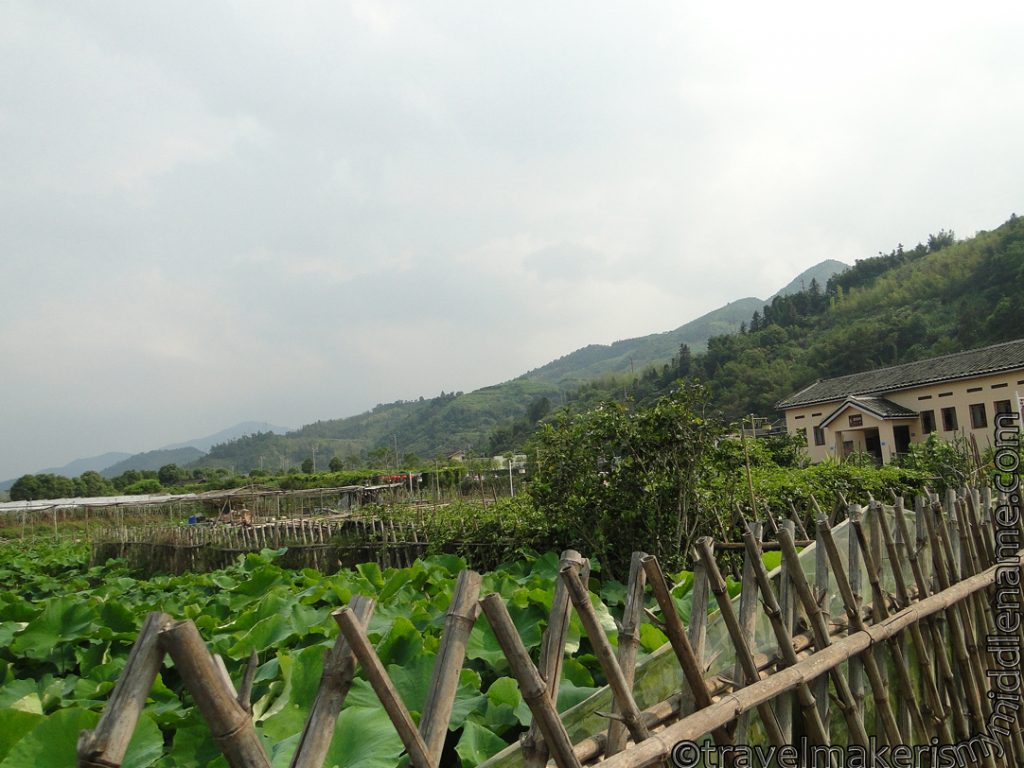

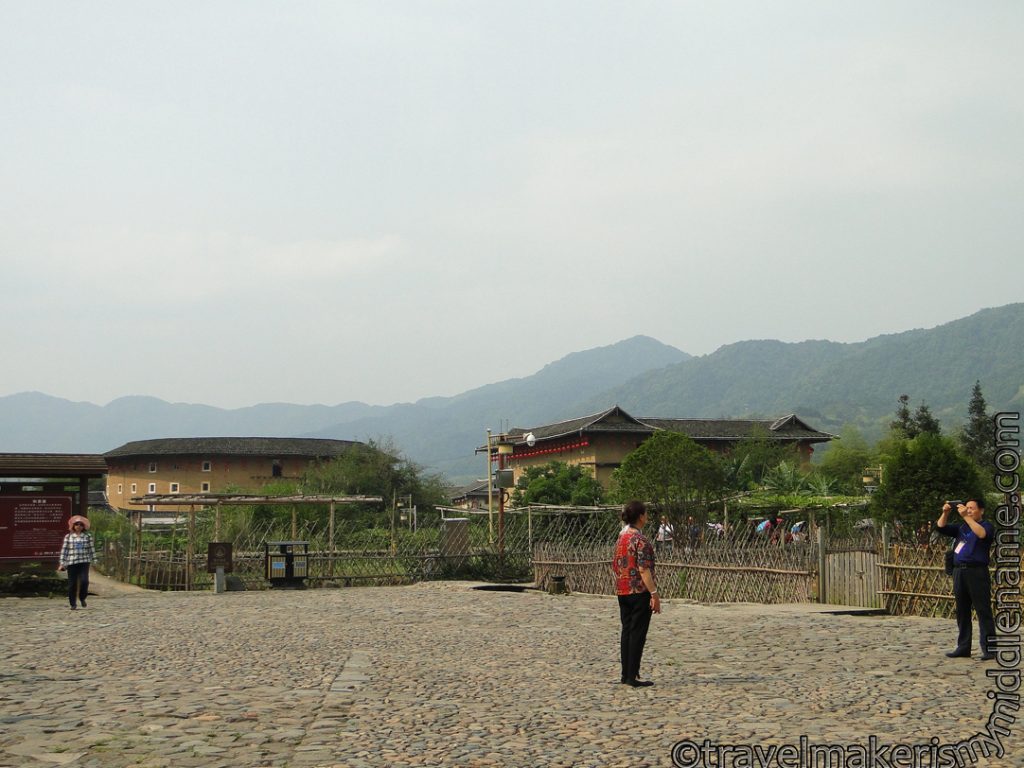
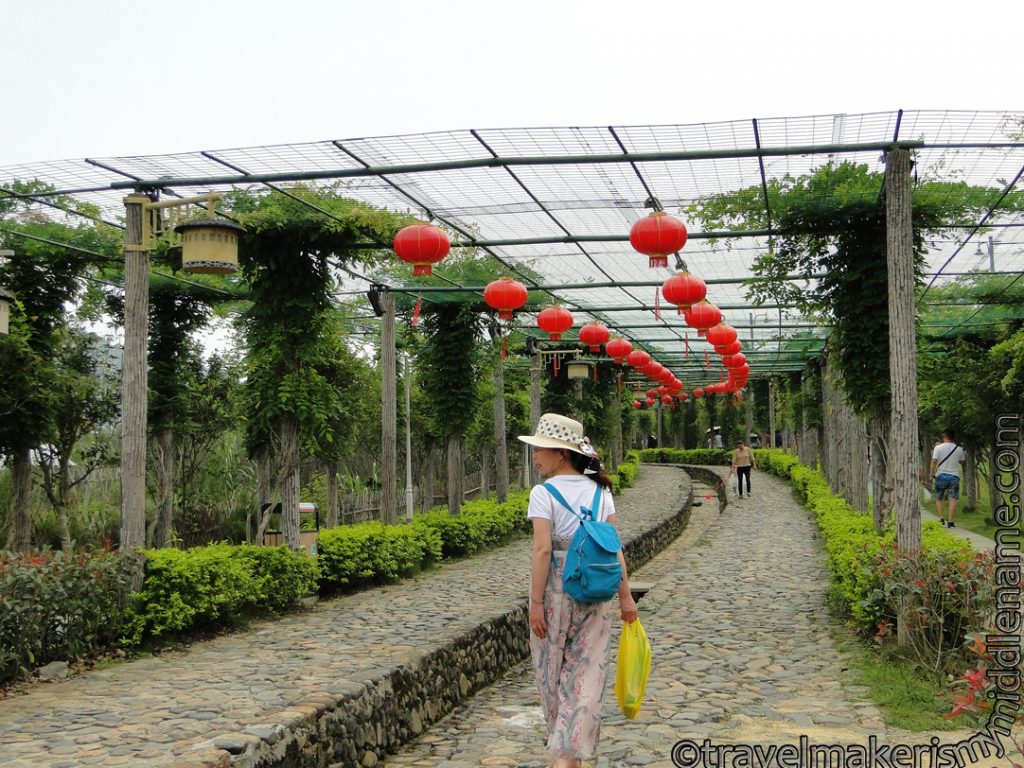
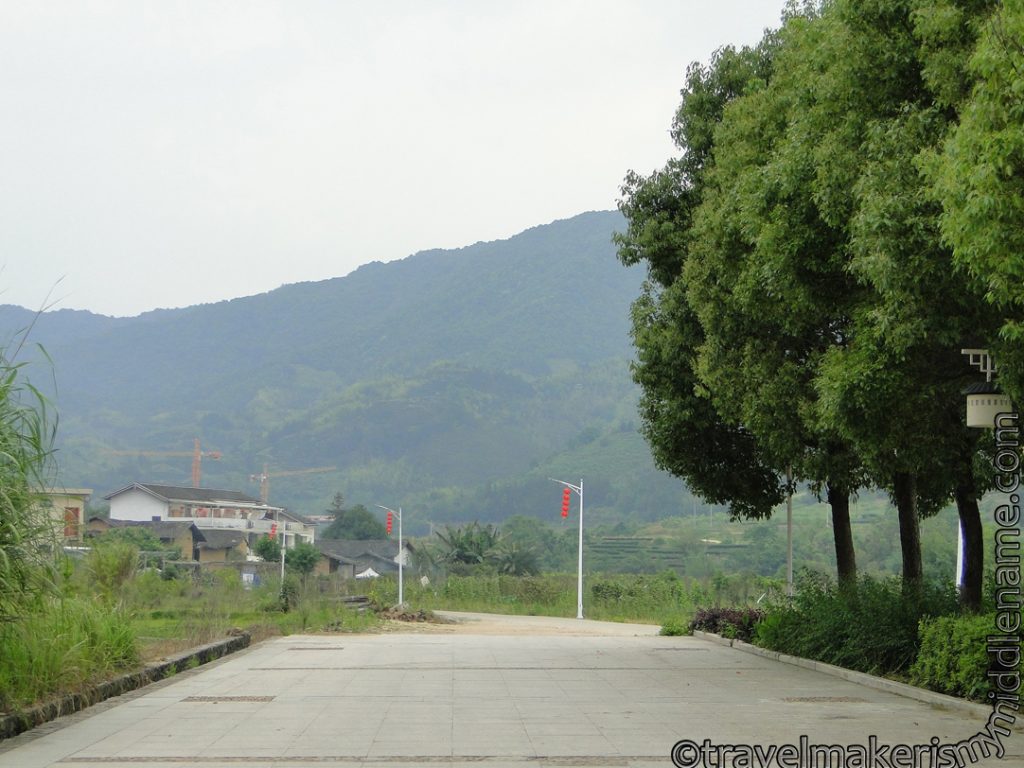
Best time to visit
Depending on what you are here for, spring and autumn are great times to visit. Xiamen is known for its foggy weather, as you can see in this photo I took, but it was pleasant and not too unbearably hot during mid May when I went, this was the same for the tulou villages. If you want to see the teas in particular, I suggest you come in spring or autumn, when the tea are being harvested.
Are you ready to pack your bags? Book your flights and hotels now!
Booking.com©All rights reserved for all content and photographs, usage on 3rd party sites are forbidden without permission. Photos are taken by author unless otherwise stated.



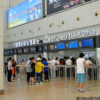
Very usefull information, I like it. I keep follow you. Also, I found best info about Uzbekistan Tours
Very usefull information, I will follow you. Best tour in Central Asia
Very usefull information, I will follow you. I bet with you that best tour in Kyrgyzstan
Мне нравится этот пост